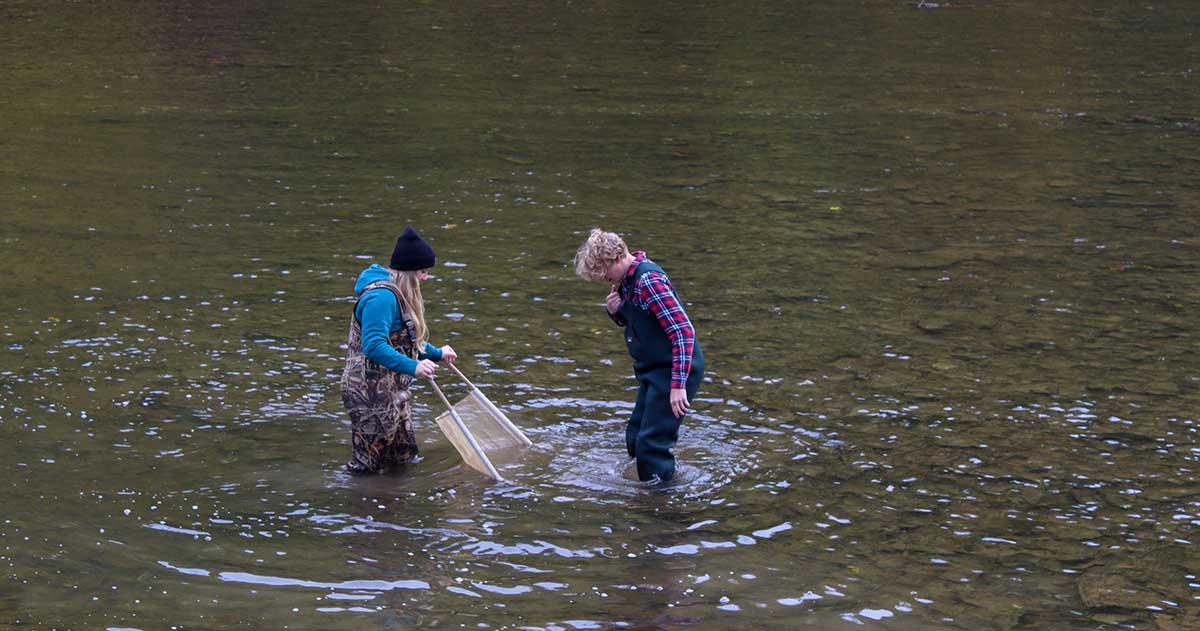ENVIRONMENTAL STUDIES CORE
Take the following courses:
ESS-100 Environmental Systems I
4 CreditsN, WK-SP, CTGISPre-Req or Co-Req: FYC-101 or EN-110 or EN-109.
ESS-110 Environmental Systems II
3 CreditsN, SW-LEPrerequisite or corequisite: FYC-101 or EN-110 or EN-109. (NOTE: ESS-100 is not a prerequisite for ESS-110.)
ESS-206 Global Environmental Issues
4 CreditsN, WK-SI
ESS-224 Wildlife Mgmt
3 CreditsNPrerequisites: ESS100 and BI105 and BI121. A special course fee is assessed.
ESS-305 Environmental Economics
3 CreditsS
ESS-324 Natural Resource Management
3 CreditsNPrerequisites: ESS100 and BI105 and BI121. A special course fee is assessed.
ESS-337 Environmental Law
3 CreditsS, CTGISPrerequisites: ESS-100 or PS-110. Must have sophomore standing or above.
OTHER SCIENCE PREREQUISITES
Take one of the following courses:
BI-101 General Biology I
4 Credits
GL-100A Environmental Geology
3 CreditsN
ENVIRONMENTAL ANALYSIS
Take the following courses:
ESS-230 Environmetrics
3 CreditsN, QS, CTGES, CTGISPrerequisites: Sophomore standing and permission of the instructor.
ESS-310 Water Resources I
3 CreditsQM, NPrerequisites: ESS100.
ESS-330 Geographical Information Systems
4 CreditsCTGISNote: A special course fee is assessed. Prerequisite: ESS100.
COURSES FROM ALLIED FIELD
Students must take one introductory course from two different allied fields: two elective courses in a focal area or concentration. NOTE: Allied fields include PACS, Politics, History, Business, Economics, Sociology, Gender Studies, IS, Psychology, or a language.
CAPSTONE
Take one of the following courses:
ESS-400 Senior Capstone I
1-3 CreditsS, CTGISPrerequisite: ESS200 and Senior Standing or permission of the instructor.
ESS-401 Senior Capstone II
1-3 CreditsN, S, CTGISPrerequisites: ESS100 and Junior or Senior standing or permission.
**Environmental Studies Students are strongly advised to take a Secondary Emphasis in an allied field.
The ESS Department also offers resident programs at the Raystown Field Station and a Marine Science Program in India. Courses taken in these programs as well as other programs may substitute directly into your POE. Students interested in these programs should work with their advisors to plan accordingly.
POE Credit Total = 46-48
Students must complete at least 18 credits at the 300/400-level. Any course exception must be approved by the advisor and/or department chair.
 skip to content
skip to content




